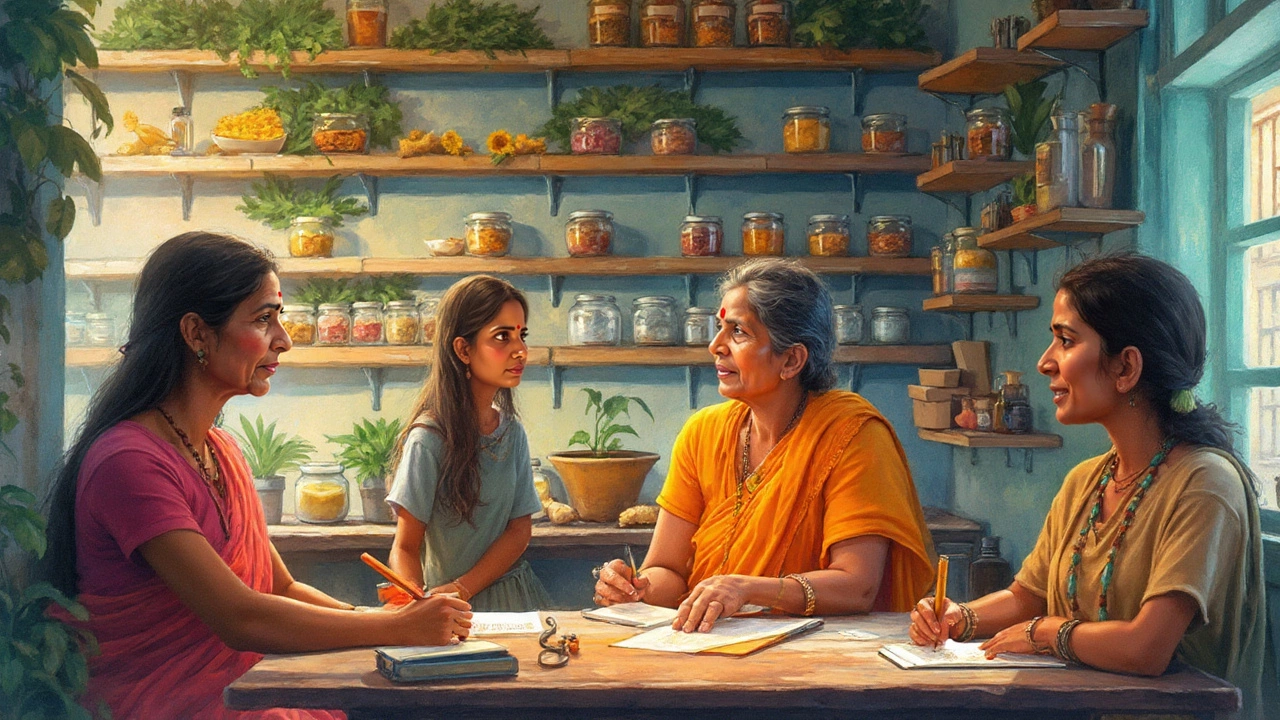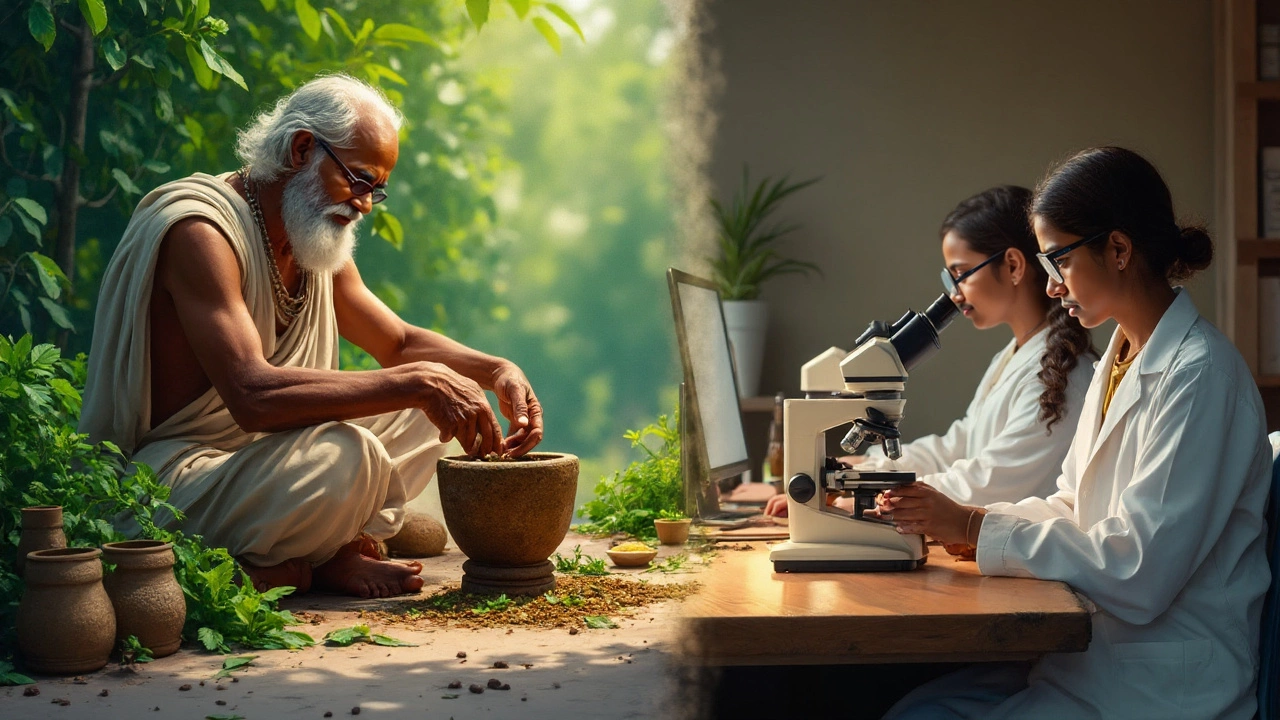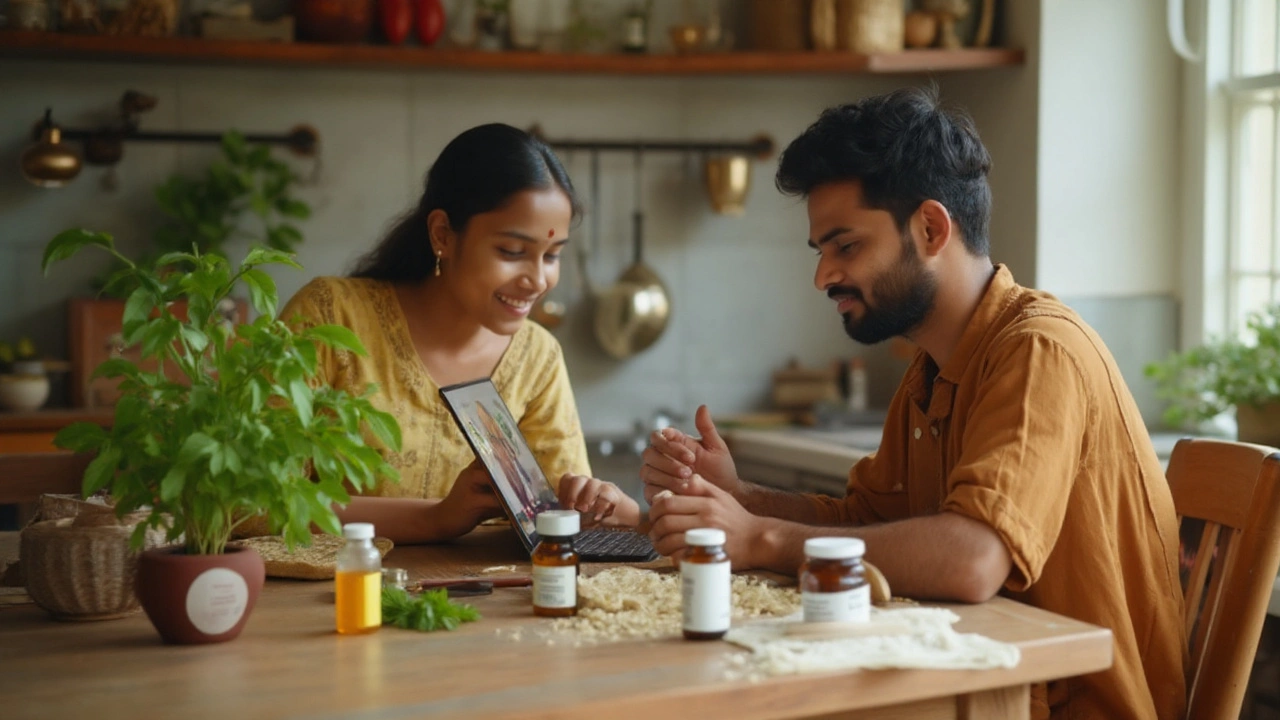
Picture this: my daughter Avni gets a cold. Before I can reach for any cough syrup, my mom is at my side, already brewing ginger-tulsi tea with honey. This blend feels more like a warm hug than medicine. It’s the same every winter—herbal remedies flood our kitchen. But are those family traditions and plant-based solutions just cozy rituals, or do they hold real power? That’s the question bugging many of us, stuck between ‘Dadi ka nuskha’ and modern medicine. With shelves crowded by herbal capsules, natural tonics, and big promises, the line between fact and marketing blurs fast.
Let’s peel back the hype and see whether these ancient leaves, roots, and flowers have muscle or if it’s all clever storytelling.
How Herbal Medicine Works: The Claims vs. The Science
People don’t trust herbal medicine by accident. It’s been around for thousands of years—according to the World Health Organization, over 80% of people worldwide still rely on plants as their first line of healthcare. Ayurveda from India or Traditional Chinese Medicine (TCM) uses herbs as the backbone of their healing systems. Ashwagandha for stress, ginger for nausea, and turmeric for inflammation top the list. But what’s inside those leaves and roots that gives them their magic?
Plants produce chemicals called phytochemicals—to protect themselves from bugs, fungi, or UV rays. Some phytochemicals, like curcumin in turmeric, have anti-inflammatory properties. Others target bacteria, soothe digestion, or even calm nerves. Western medicine is starting to pay attention. For instance, a legitimate study at John Hopkins found that artemisinin, a compound from sweet wormwood, is exceptionally effective against malaria—and has saved millions of lives globally since the 1970s.
Here’s where it gets messy though. If you walk into a pharmacy, you know precisely how much paracetamol is in a tablet. Not so clear with a herbal brew. Dosage changes based on the plant’s age, where it grows, how it’s brewed, even whether you plucked it at day or dusk. The active compound, sometimes, is present in tiny amounts. That makes scientific study harder. Also, just because something is ‘natural’ doesn’t mean it’s harmless. Some plants carry toxic risks (remember belladonna, or datura?). My friend once got severe skin burns from wild parsnip juice during a camping trip—nature is powerful, but not always gentle.
The phrase “herbal doesn’t equal safe” comes up a lot among doctors, but it’s worth thinking about why. Herbal medicines usually include dozens of compounds in one plant; the effect you get isn’t always predictable. That’s why most medical studies on herbs show mixed results—one batch helps, another does nothing, and a third causes problems. Most herbal medicines lack the rigorous clinical trials demanded by regulators. You’ll see lots of animal tests and test tube experiments, fewer large, double-blind human studies. This is less because herbal medicine has ‘something to hide’ and more about costs, standardization issues, and less patent protection compared to synthetic drugs.
Still, some herbs stand up to scrutiny. For example, St. John’s Wort (often for mild depression) outperformed placebo in several studies, but also interacts with lots of prescription meds, reducing their effectiveness— yikes! Garlic supplements help lower blood pressure, according to data from over 20 controlled trials reviewing nearly 1,000 participants. Peppermint oil gels calm irritable bowel syndrome. However, echinacea, once thought a cold-and-flu superstar, didn’t meet expectations in most high-quality research. So the answer is not black-and-white. Herbal medicine can absolutely work, but not every plant deserves a spot in your medicine cabinet.
| Herbal Remedy | Main Use | Major Evidence | Risks/Notes |
|---|---|---|---|
| Turmeric (Curcumin) | Inflammation | Modest support for arthritis | Must be combined with black pepper for absorption |
| Ginger | Nausea, digestion | Strong evidence for morning/chemo sickness | Large doses may thin blood |
| Ashwagandha | Stress, anxiety | Early studies show improved stress markers | Long-term safety unclear |
| Ginseng | Energy, immunity | May slightly boost mental performance | Can raise blood pressure |
| St. John's Wort | Mild depression | Beats placebo in some human trials | Bad interactions with many meds |
Many people forget how much modern medicine owes to plants. Over half of prescription drugs are directly or indirectly plant-based at their origin. Aspirin, for example, was inspired by willow bark extract—yes, people chewed on this for pain relief centuries before the white pill arrived. So herbal medicine laid the foundation for lots of our current treatments; the controversy is more about self-diagnosing and unregulated use than plants themselves.

Smart Use of Herbal Remedies: Benefits, Pitfalls, and Real-Life Examples
Anyone with a cupboard full of herbal teas, oils, and capsules knows it’s easy to get lost. Some folks think more herbs equal more healing, but mixing random remedies gets risky. So how do you judge the good stuff from the duds, and avoid the hidden dangers?
First off, let’s talk quality. Herbal medicine is like fruit—freshness, source, and storage matter. If you buy sealed bottles from a trusted pharmacy, you’re less likely to get moldy or adulterated herbs. But if you buy off market stalls or sketchy websites, all bets are off. Researchers found that up to 30% of some herbal supplements in the US and India didn’t contain what their label promised. Sometimes the biggest risk is not what’s written on the package, but what’s slipped inside without your knowledge—heavy metals, pesticides, or cheap fillers.
Another thing people overlook is interaction with prescription drugs. My son Vihaan takes asthma medicine, so certain herbs are strictly off-limits. For example, ginkgo (popular for memory) can thin blood, and when combined with blood-thinner drugs, it’s a recipe for trouble. Think of grapefruit—sounds harmless, but it can boost or block effects of many prescription pills. The same goes for lots of herbal supplements.
When the benefits show up, they’re often mild but meaningful. Chomping fresh ginger before a long car ride nips nausea in the bud for Avni (she’s a world champion at motion sickness). Mom’s ashwagandha tea seems to take the edge off her evening stress. But the impact is usually less than what you get from a concentrated pharmaceutical drug. Herbal treatments work best as gentle helpers, not miracle cures. They tend to shine in chronic aches, gut discomfort, or minor mood issues—not emergencies, infections, or high fevers.
Let’s put it this way: you can drink tulsi-ginger tea for a scratchy throat, but you’ll need antibiotics if you get strep (or else risk kidney damage). People sometimes stick with ‘natural’ for too long and miss the chances to solve the real issue. I tell family and friends: herbs are brilliant for mild issues and daily wellness routines, but don’t play doctor with them when things start to look serious.
Here’s a rap sheet of tips I’d give anyone considering herbal medicine at home:
- Double-check for allergies. Plants are potent and some people react badly even to ‘safe’ ones like chamomile.
- Stick to standardized extracts or trusted brands. Loose herbal powders are hardest to verify.
- Never mix herbal supplements with prescription meds without your doctor’s green signal.
- Be extra careful during pregnancy, for children, and seniors—their bodies handle things differently.
- If you notice rashes, dizziness, or new symptoms, stop right away. Don’t tough it out.
- Remember, more isn’t better. Large doses increase risks and don’t always boost benefits.
- Keep a list of what you take. If you need urgent care, share it with your doctor fast.
Stories bring it alive: my neighbor, a marathon runner, swore by turmeric milk for sore muscles and found it kept her joints ache-free better than pricey supplements. My wife, skeptical of most herbal stuff, found holy basil drops cleared up her recurring mouth ulcers when pharmacy ointments didn’t work. But, on the flip side, a distant cousin overdosed on licorice root tea—landed in the ER with high blood pressure and potassium drops. The moral? See herbal medicine as extra support, not a substitute for professional care when needed.

The Future of Herbal Medicine: Trends, Evidence, and Safe Integration
Herbal medicine isn’t fading away—it’s doing the opposite. After COVID, more people in India, the US, and Europe picked up immunity blends, ayurvedic concoctions, and DIY herbal recipes. The global herbal supplement industry was valued at $150 billion in 2024 and growing fast, thanks to a massive demand for natural wellness. Instagram and TikTok are awash with influencers mixing golden milk lattes or raving about adaptogen powders for energy.
The exciting bit? Scientists are finally paying closer attention. More research centers are funded to study how these ancient remedies really work, who should use them, and in what doses. AI tools are helping researchers analyze the zillion combinations of compounds plants contain, trying to hunt down which ones are safe and actually effective. For instance, researchers at IIT Delhi and Harvard are mapping curcumin’s role in fighting mild depression and inflammatory diseases using machine learning models—something that was unthinkable a decade ago.
Tech is improving too. Look for QR codes on genuine herbal bottles linking to third-party lab reports. Some apps now let you scan a supplement and find verified safety details, user reviews, and real-time alerts about recalls or side effects. This transparency should help weed out the fakes and increase trust in what you buy.
But the old wisdom still stands—you can’t look for miracle cures in a bottle. If you want to try herbal remedies:
- Start small, with single-ingredient products so you can track how your body reacts.
- Don’t blindly trust ‘ancient wisdom’ over science—herbal healing is best when old knowledge meets modern research.
- Ask your doctor or a professional if you have health conditions or take other meds.
- Watch out for marketing buzzwords. ‘Clinically proven’ means little without knowing who ran the study and how big it was.
- Enjoy the rituals and comfort, but don’t ignore real medical advice for serious sickness.
People use herbs because they want gentle, natural support with fewer side effects—not because plants are perfect. Every kitchen has its own comfort brews and trusty home remedies; some are backed by science, some are just nostalgia in a cup. I’ve seen firsthand how sensible use of herbal medicine improves daily comfort, supports good sleep, and soothes minor aches—just don’t expect it to replace the ER or modern interventions when you really need them. Stick to trusted products, keep communication open with your healthcare provider, and use nature’s pharmacy with the same care you’d use any medicine. Sometimes, a mug of ginger-tulsi tea is just what you need—and sometimes, you need more than a sweet-smelling brew can offer.





Rohan Talvani
I am a manufacturing expert with over 15 years of experience in streamlining production processes and enhancing operational efficiency. My work often takes me into the technical nitty-gritty of production, but I have a keen interest in writing about medicine in India—an intersection of tradition and modern practices that captivates me. I strive to incorporate innovative approaches in everything I do, whether in my professional role or as an author. My passion for writing about health topics stems from a strong belief in knowledge sharing and its potential to bring about positive changes.
view all postsWrite a comment